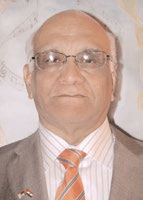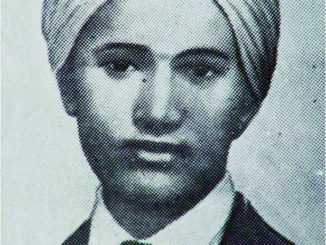
“If I were asked under what sky the human mind has most fully developed some of its choicest gifts, has most deeply pondered on the greatest problems of life, and has found solutions, I should point to India.”
–Max Mueller
The culture of India refers collectively to the thousands of distinct and unique cultures of all religions and communities present in India. India’s languages, religions, dance, music, architecture, food, and customs differ from place to place within the country. The Indian culture often labeled as an amalgamation of several cultures, spans across the Indian subcontinent and has been influenced by a history that is several millennia old. Many elements of India’s diverse cultures, such as Indian religions, Indian philosophy and Indian cuisine, have a profound impact across the world.
Indian-origin religions include Hinduism and its offshoots Buddhism, Jainism and Sikhism, all of which are based on the concept of dharma and karma.
Indian-origin religions have been persecuting by for centuries. Muslim rulers massacred Hindus and Buddhists while attacking temples and monasteries, while also forcing them to convert including on the battlefield. Most of the great temples in North India were destroyed during the Muslim rule. Consequently, between the years 1000 AD and 1500 AD, the population of the Indian subcontinent decreased from 200 to 125 million. Foreign-origin religion, including Abrahamic religions, such as Judaism, Christianity and Islam, are also present in India, as well as Zoroastrianism and Bahá’í Faith both escaping persecution by Islam have also found shelter in India over the centuries.
India has 29 states with different culture and civilizations and one of the most populated countries in the world. The Indian culture, often labeled as an amalgamation of several various cultures, spans across the Indian subcontinent and has been influenced and shaped by a history that is several thousand years old. Throughout the history of India, Indian culture has been heavily influenced by Dharmic religions. They have been credited with shaping much of Indian philosophy, literature, architecture, art and music.
Greater India was the historical extent of Indian culture beyond the Indian subcontinent. This particularly concerns the spread of Hinduism, Buddhism, architecture, administration and writing system from India to other parts of Asia through the Silk Road by the travelers and maritime traders during the early centuries of the Common Era. To the west, Greater India overlaps with Greater Persia in the Hindu Kush and Pamir Mountains. Over the centuries, there has been significant fusion of cultures between Buddhists, Hindus, Muslims, Jains, Sikhs and various tribal populations in India.
India is the birthplace of Hinduism, Buddhism, Jainism, Sikhism, and other religions. They are collectively known as Indian religions. Indian religions are a major form of world religions along with Abrahamic ones. Today, Hinduism and Buddhism are the world’s third and fourth-largest religions respectively, with over 2 billion followers’ altogether, and possibly as many as 2.5 or 2.6 billion followers. Followers of Indian religions – Hindus, Sikhs, Jains and Buddhists make up around 80–82% population of India.
India is one of the most religiously and ethnically diverse nations in the world, with some of the most deeply religious societies and cultures. Religion plays a central and definitive role in the life of many of its people. Although India is a secular Hindu-majority country, it has a large Muslim population. Except for Jammu and Kashmir, Punjab, Meghalaya, Manipur, Nagaland, Mizoram and Lakshadweep, Hindus form the predominant population in all 29 states and 7 union territories. Muslims are present throughout India, with large populations in Uttar Pradesh, Bihar, Maharashtra, Kerala, Telangana, West Bengal and Assam; while only Jammu and Kashmir and Lakshadweep have majority Muslim populations. Sikhs and Christians are other significant minorities of India.
Ancient India
The period between the 4th century and 6th century AD is known as the Golden Age of India because of the large achievements Indians made in the fields of mathematics, astronomy, sculpting and painting during the Gupta Empire. Significant contributions to the decimal numeral system, including the concept of zero happened during this period in India. The Golden Age in India came to an end when the Hunas invaded the Gupta Empire in the 6th century AD.
The Gupta Empire saw a vast range of scientific and cultural achievements. To the chagrin of many high school math students, trigonometry and geometry got their start during this golden age. And Guptan mathematicians developed the concept of zero and the number system. Other major contributions from this era helped improve human health. Not only did scientists and doctors expand the alternative system of medicine called Ayurveda, but they also improved surgical practices and helped popularize vaccinations.
But the Guptan Empire didn’t focus solely on science and math. Art and architecture were abundant during this time. In fact, the son of Chandragupta I, Samudragupta, was an avid art lover and commissioned works that can be found in museums to this day. The Gupta Empire is also responsible for a game still popular around the globe today: chess.
Medieval India
South India in the 10th and 11th century AD under the imperial Chola Dynasty has been called Golden Age as well. The period saw extensive achievements in architecture, literature, sculpture and bronze working, maritime conquests with extensive trade, and quasi-democratic reforms.
INDIA’S HISTORY AND FUTURE MAKE IT GREAT
- Indians invented Zero without which mathematics wouldn’t have existed.
- Indian epics such as Ramayana and Mahabharata are voluminous, unlike other epics in the world.
- Indians gave Yoga to the world.
- Pearls, diamonds were sold on the streets of Vijayanagara Empire in India.
- Until 18th century, India was the only source of diamonds in the entire world.
- Kings from other countries looted wealth from India. (e.g. Somanatheshwara Temple in Gujarat was looted 17 times)
- Ashoka the Great spread Buddhism all over Asia.
- Ayurveda took its birth in India.
- We have the largest English-speaking population in the world.
- We believe in Unity in Diversity. Each and every state in India speaks a different language and still we are united and living together happily.
- Indians discovered that there were 9 planets in the solar system 1000’s of years ago. (Navagraha)
- Though British ruled India for over 300 odd years, we overtook them in terms of GDP and we lead them, they trail us.
- We treat everything as God here, water as Ganga, food as Annapurna, money as Lakshmi, education as Saraswati and our country as our mother.
- India is considered as the youngest nation in the world because of its young population.
- India still follows agriculture as her primary occupation and became the fastest growing economy in the world.
-
Indians lead many top companies in the current corporate world.
Google led by Sundar Pichai
Microsoft led by Satya Nadella
Berkshire Hathaway Insurance led by Ajit Jain
Master Card led by Ajay Banga
Adobe led by Shantanu Narayan
Delloite led by Punit Renjen
Pepsi led by Indra Nooyi.
To add more, we are the largest democracy in the world, more than we need the world…the world needs us because we are the largest exporters of food crops, software, spices, milk etc.
WORLD HERITAGE SITES IN INDIA
There are 35 World Heritage Sites (27 cultural and 7 natural sites and 1 mixed) in India that are recognized by the United Nations Educational, Scientific and Cultural Organization (UNESCO) as on July 2016.
These World Heritage Sites in India are considered to be of immense cultural and natural importance in the world.
These sites are:
Nalanda Mahavihara (Nalanda University), Bihar
Khangchendzonga National Park, Sikkim
Capitol Complex, Chandigarh
Great Himalayan National Park, Himachal Pradesh
Rani Ki Vav, Patan, Gujarat
Group of Monuments at Hampi, Karnataka
Group of Monuments at Pattadakal, Karnataka
Khajuraho Group of Monuments, Madhya Pradesh
Hill Forts of Rajasthan
Mahabodhi Temple Complex at Bodh Gaya, Bihar
Churches and Convents of Goa
Buddhist Monuments at Sanchi, Madhya Pradesh
Great Living Chola Temples, Tamil Nadu
up of Monuments at Mahabalipuram, Tamil Nadu
Rock Shelters of Bhimbetka, Madhya Pradesh
Ajanta Caves, Maharashtra
Ellora Caves, Maharashtra
Elephanta Caves, Maharashtra
Kaziranga Wild Life Sanctuary, Assam
Manas Wild Life Sanctuary, Assam
Keoladeo National Park, Bharatpur, Rajasthan
Nanda Devi and Valley of Flowers National Parks, Uttarakhand
Sundarbans National Park, West Bengal
Western Ghats
Humayun’s Tomb, New Delhi
Red Fort Complex, Delhi
Chhatrapati Shivaji Terminus (formerly Victoria Terminus), Maharashtra
Sun Temple, Konark, Odisha
Jantar Mantar, Jaipur, Rajasthan
Agra Fort, Uttar Pradesh
Fatehpur Sikri, Uttar Pradesh
Taj Mahal, Agra, Uttar Pradesh
Mountain Railways of India
Qutab Minar and its Monuments, New Delhi
Champaner-Pavagadh Archaeological Park, Gujarat
CLASSICAL DANCE FORMS
India has a very rich culture of dance and music including traditional, classical, folk and Tribal dances styles and music.
In the Indian culture, classical dance has a lot of significance. Because it serves as a fabulous way to express the innate feelings of the heart.
The Classical Dances of India includes Bharatanatyam, the oldest form of the classical dance in the country and one of the Most Popular Classical Dance in India also ancient in Natya Shastra.
There are eight forms of famous Indian classical dance-Bharatanatyam, Kathak, Kathakali, Kuchipudi, Manipuri, Odissi, Sattriya, Mohiniyattam, Gaudiya Nritya.
Coming to material progress India has made, India today is the fastest growing economy, at over 7%.
So far, why India is great. But the question is how India can continue not only to remain great but acquire still higher greatness. Only one thing which can sustain the momentum of India’s greatness is the unity of people and commitment to the nation.
All Indians, whether in India, or abroad need always to keep in mind that it is one Bharat which belongs to all equally and must always be loved, respected and protected at all costs.
Vande Mataram!
 Sponsored by Arish Sahani, President, Indian American Intellectuals Forum, New York. Mr. Sahani can be reached at arish.sahani@gmail.com)
Sponsored by Arish Sahani, President, Indian American Intellectuals Forum, New York. Mr. Sahani can be reached at arish.sahani@gmail.com)





This is completely biased brainwashing. India is 40%+ poverty. People drinking cow piss in the name of god and arrogant to learn from other cultures. India thinks they are great but to stupid to realize USA and outsourcing of mncs actually improved their economy. They can’t even admit nasa helped them get to the moon. India hasn’t created one thing in the last decade to create innovation to the world. All they do is copy like uneducated monkeys.